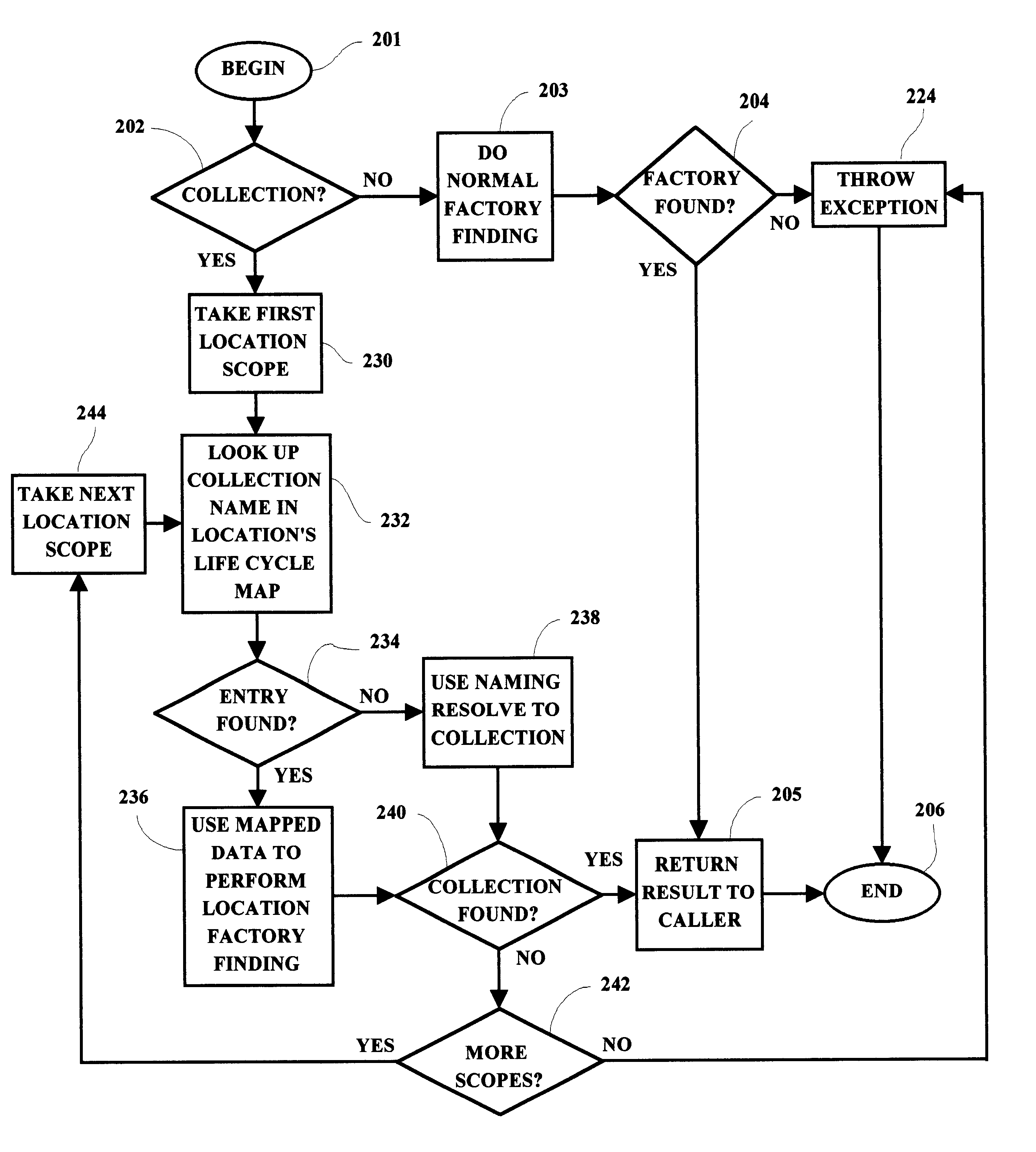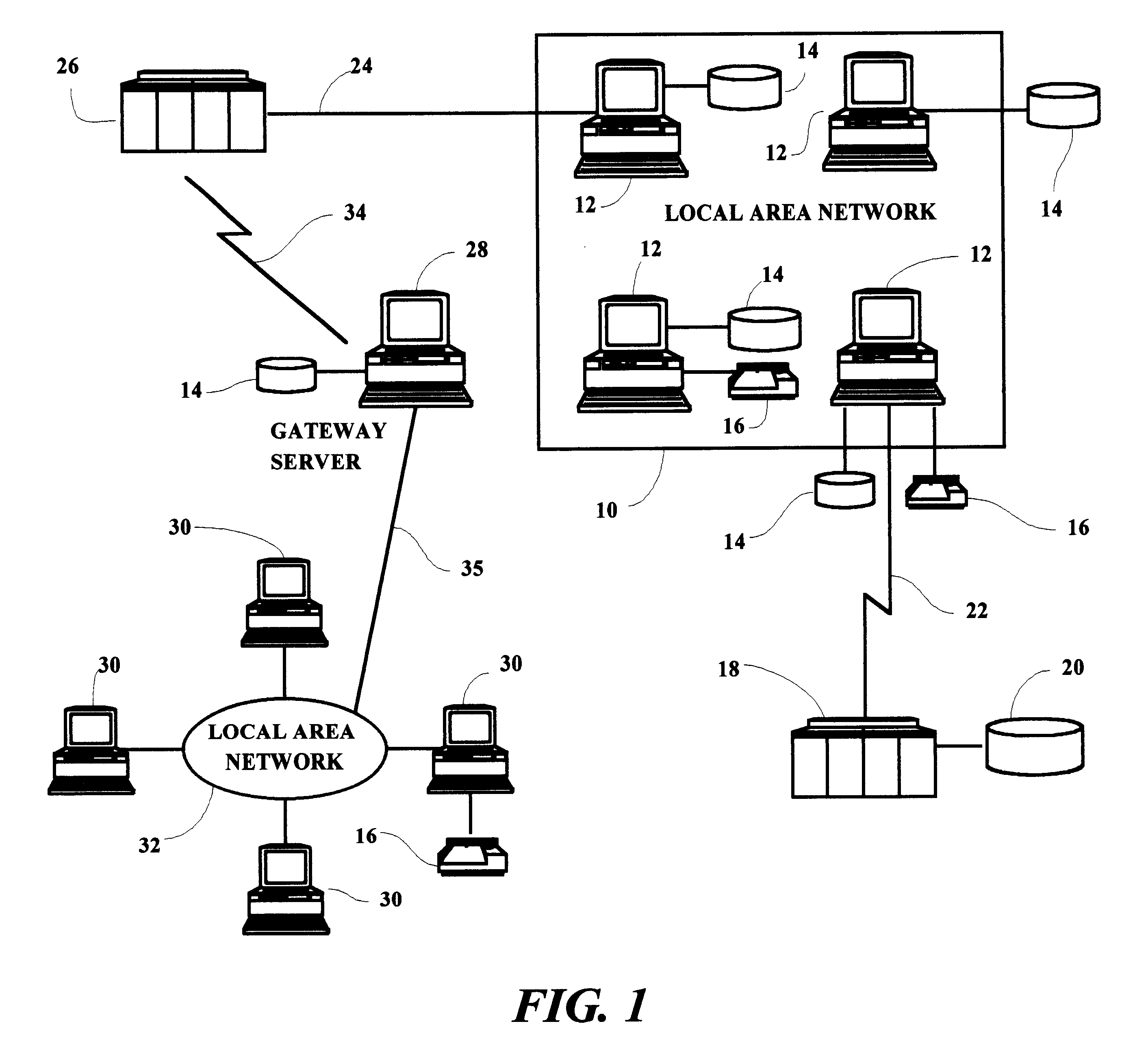Finding named collections via life cycle interfaces
a life cycle interface and collection technology, applied in the field of information processing systems, can solve the problems of time-consuming and repetitive development of application and system software for information processing systems, and achieve the effect of enhancing life cycle services
- Summary
- Abstract
- Description
- Claims
- Application Information
AI Technical Summary
Benefits of technology
Problems solved by technology
Method used
Image
Examples
Embodiment Construction
[0021]The various methods discussed herein may be implemented within an exemplary distributed information processing system as illustrated in FIG. 1. As shown, an information processing system contains a plurality of networks including Local Area Networks (LAN) 10 and 32, each of which preferably includes a plurality of individual computers 12 and 30, respectively. One skilled in the art will appreciate that a plurality of workstations coupled to a host processor may be utilized for each such LAN. As is common in such processing systems, each computer 12 and 30, may be coupled to a storage device 14 and a printer 16.
[0022]The exemplary processing system further includes one or more mainframe computers, such as mainframe computer 18, which may be preferably coupled to LAN 10 by means of a communications link 22. Mainframe computer 18 is preferably coupled to a storage device 20, which serves as remote storage for LAN 10. LAN 10 is also coupled via communications link 24 through commu...
PUM
 Login to View More
Login to View More Abstract
Description
Claims
Application Information
 Login to View More
Login to View More - R&D
- Intellectual Property
- Life Sciences
- Materials
- Tech Scout
- Unparalleled Data Quality
- Higher Quality Content
- 60% Fewer Hallucinations
Browse by: Latest US Patents, China's latest patents, Technical Efficacy Thesaurus, Application Domain, Technology Topic, Popular Technical Reports.
© 2025 PatSnap. All rights reserved.Legal|Privacy policy|Modern Slavery Act Transparency Statement|Sitemap|About US| Contact US: help@patsnap.com



